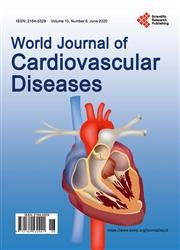Heart Failure: Organization of Care after Hospitalization at the Abidjan Cardiology Institute
引用次数: 0
Abstract
Introduction: The care pathway for heart failure (HF) patients is poorly documented in sub-Saharan Africa. A multidisciplinary management reduces hospitalizations and mortality. In our context of frequent rehospitalization of heart failure patients, the objective of this study was to analyse the post-hospital follow-up health care. Methods: We conducted a prospective study in the medical department of a Heart Institute from January 1st to December 31, 2015. Patients over 18 years of age, hospitalized for heart failure, consenting and followed up on an outpatient basis for 2 years were included. Results: We collected 396 patients hospitalized for HF. The mean age was 57.4 ± 16 years with a male predominance (59.3%). Retired and unemployed people represented 27% and 16.2% respectively. During the post-hospitalization follow-up, patients who were regularly followed up represented 10.8% of the cases. 74.1% of the cases were regular patients. Patients were not followed up by the usual practitioner (58.2%). Only 94 patients had undergone a cardiovascular rehabilitation programme, of which 21.3% for exercise rehabilitation and 78.7% for therapeutic education. Patients who had attended titration sessions (n = 59) had reached optimal doses of ACE inhibitors, ARB II and beta blockers in 67.8%, 7.3% and 38.5% respectively. The rates of decompensation (73.3%) and rehospitalization (49.5%) were higher. The paraclinic check-up (ECG, X-ray, Cardiac Doppler ultrasonography, Biology) was rarely requested. The probability of survival was higher in patients regularly monitored than in those irregularly monitored. Conclusion: The organisation of care and coordination between professionals should be structured or planned. Therapeutic strategies need to be intensified in order to optimise their long-term benefits.心脏衰竭:在阿比让心脏病研究所安排住院后的护理
导读:在撒哈拉以南非洲,心力衰竭(HF)患者的护理途径文献很少。多学科管理降低了住院率和死亡率。在我们频繁的心衰患者再住院的背景下,本研究的目的是分析院后随访卫生保健。方法:我们于2015年1月1日至12月31日在某心脏研究所内科进行前瞻性研究。患者年龄超过18岁,因心力衰竭住院,同意并在门诊基础上随访2年。结果:我们收集了396例心衰住院患者。平均年龄57.4±16岁,男性居多(59.3%)。退休人员和失业人员分别占27%和16.2%。在住院后随访中,定期随访的患者占10.8%。正常患者占74.1%。患者未得到普通医师随访(58.2%)。只有94例患者接受了心血管康复计划,其中21.3%接受了运动康复,78.7%接受了治疗性教育。参加滴定疗程的患者(n = 59)分别有67.8%、7.3%和38.5%达到ACE抑制剂、ARB II和β受体阻滞剂的最佳剂量。失代偿率(73.3%)和再住院率(49.5%)较高。旁诊检查(心电图、x线、心脏多普勒超声、生物学)很少被要求。定期监测的患者生存率高于不定期监测的患者。结论:护理的组织和专业人员之间的协调应结构化或有计划。治疗策略需要加强,以优化其长期效益。
本文章由计算机程序翻译,如有差异,请以英文原文为准。
求助全文
约1分钟内获得全文
求助全文

 求助内容:
求助内容: 应助结果提醒方式:
应助结果提醒方式:


